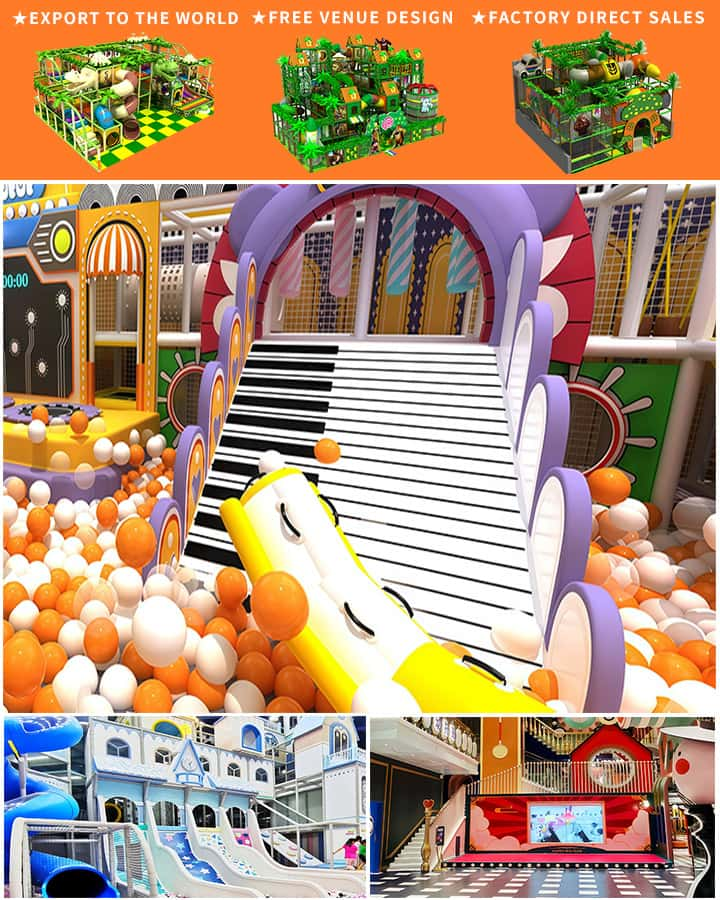In today’s fast-paced world, finding innovative ways to stimulate children’s senses is more important than ever. Indoor sensory play equipment offers an engaging and enriching experience that can enhance a child’s cognitive, social, and physical development. This guide explores the various types of indoor sensory play equipment available, their benefits, and practical tips for incorporating them into your home or educational setting.
Understanding Sensory Play Equipment
Sensory play equipment is designed to stimulate the five senses: sight, sound, touch, taste, and smell. These activities are particularly beneficial for young children as they help develop crucial neural connections. By engaging multiple senses simultaneously, sensory play can make learning more dynamic and enjoyable.
Types of Indoor Sensory Play Equipment
Tactile Toys
Tactile toys focus on stimulating the sense of touch. They can include items like textured balls, sandboxes with different grains, and sensory bins filled with rice or beans. Children explore these objects by touching, squeezing, and manipulating them, helping to refine fine motor skills and fostering tactile exploration.
Visual Stimulation Tools
Visual stimulation tools aim to captivate a child’s attention through bright colors and moving parts. Examples include light tables, bubble tubes, and projectors. These tools support visual processing and can be used in conjunction with other sensory activities to deepen engagement.
Auditory Devices
 Auditory devices engage the sense of hearing through sounds and music. Options range from simple instruments like drums and xylophones to more complex setups like electronic keyboards and white noise machines. These tools help develop auditory discrimination and rhythm appreciation.
Auditory devices engage the sense of hearing through sounds and music. Options range from simple instruments like drums and xylophones to more complex setups like electronic keyboards and white noise machines. These tools help develop auditory discrimination and rhythm appreciation.
Scented Play Kits
Scented play kits introduce various aromas to stimulate the sense of smell. Kits might include scented playdough, potpourri jars, or essential oil diffusers. These activities can evoke memories and emotions, adding another layer of sensory richness to playtime.
Taste Exploration Sets
While less common due to safety concerns, taste exploration sets allow kids to safely experiment with different flavors. These might include edible playdough or flavored lip balms, always used under adult supervision, to introduce new tastes in a fun way.
Benefits of Sensory Play Equipment
Cognitive Development
Engaging multiple senses helps improve brain function and cognitive abilities. Activities that require sorting, matching, and problem-solving enhance critical thinking and decision-making skills.
Emotional Growth
Sensory play provides a safe space for children to express emotions and relieve stress. Handling different textures, sounds, and smells can be incredibly soothing and help children manage anxiety.
Social Interaction
Many sensory activities encourage cooperation and communication. Group tasks teach children how to share, take turns, and work together towards a common goal.
Physical Coordination
Manipulating sensory toys enhances hand-eye coordination and dexterity. Tasks that involve picking up small objects or pressing buttons improve fine motor skills, which are essential for writing and self-care tasks.
Practical Tips for Using Sensory Play Equipment
- Create a Sensory Space: Dedicate a corner of a room to sensory play. Use shelves or bins to organize equipment, making it easy for children to access and return items.
- Rotate Equipment: Keep activities fresh by rotating different types of sensory equipment regularly. This prevents boredom and ensures all senses are continually engaged.
- Incorporate Learning Objectives: Use sensory play to reinforce educational concepts. For example, use counting beads in sensory bins for math practice or alphabet blocks to introduce letters.
- Safety First: Always supervise sensory play activities to ensure safety, especially when using items that can pose choking hazards or contain allergens.
Conclusion
Indoor sensory play equipment opens up a world of possibilities for children, offering both fun and developmental benefits. By thoughtfully integrating tactile, visual, auditory, olfactory, and gustatory elements into playtime, parents and educators can create enriching experiences that cater to every sense. Whether you’re at home or in a classroom, investing in sensory play tools is a step toward nurturing well-rounded, curious, and resilient young minds.




